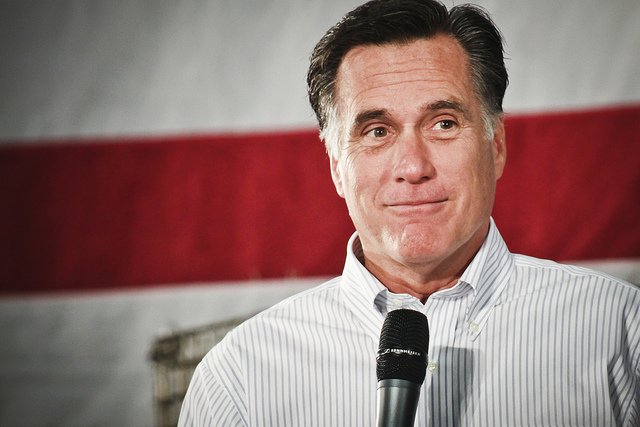Cross-posted from Climate Progress.
A new document has surfaced [PDF] showing Mitt Romney’s strong support for regulating carbon dioxide in 2003, when he called cap-and-trade “an effective approach” to combating climate change.
The comments were made in a letter from Romney to New York Gov. George Pataki (R) about a regional cooperative system for regulating greenhouse gases. In the letter, Romney agreed with Pataki on the need to “reduce the power plant pollution that is harming our climate.”
But today, in trying to align himself with conservative political backlash against climate science, Romney says “we don’t know” whether humans are warming the planet, and that doing something about the problem “is not the right course for us.”
Here’s the full letter [PDF] from Romney to Pataki:
Thank you for your invitation to embark on a cooperative northeast process to reduce the power plant pollution that is harming our climate. I concur that climate change is beginning to effect on our natural resources and that now is the time to take action toward climate protection. Furthermore, I share your interest in ensuring that the economic and security contributions made by our electricity generating system are not negated by the impact of emissions from that system on the health of our citizens.
As you may know, the commonwealth is making major strides to reduce the environmental impact of our power plants. Specifically, I am making good on my pledge to clean up the six oldest and dirtiest power plants in the state and bring them up to new plant standards for NOx, SOx, mercury and CO2. We are the first state to enact a cap on CO2, implementing regulations that, by 2008, will reduce these emissions by 10%, removing 6,750 tons of Co2 per day. Furthermore, Massachusetts, along with the other New England states and Canadian provinces, has a target of reducing greenhouse gases and improving the efficiency of the grid substantially over the next 20 years.
I believe that our joint work to create a flexible market-based regional cap and trade system could serve as an effective approach to meeting these goals. I am ready to have my staff work with yours to explore how we might design such a system — one that would keep the cost of compliance as low as possible, diversify our fuels, encourage energy efficiency and renewables, and keep our energy dollars in the region. Thank you for your initiative in proposing this project.
Mitt Romney is getting a lot of media attention for his contradictory stances on energy policy. Every week, there’s a new document or quote surfacing from the past that counters all of his current campaign mantras.
This adds to the very long list of dramatic changes to Romney’s energy policy. During his last bid for the presidency in 2007, Romney advocated aggressive fuel efficiency standards, electric vehicles, and public-private partnerships to develop clean energy.
In 2006, Romney said that high gas prices were good for discouraging consumption, explaining that he was “very much in favor of people recognizing that these high gasoline prices are probably here to stay.”
In 2004, Romney introduced a climate protection plan [PDF] for Massachusetts, laying out a “no-regrets policy” for tackling climate change.
And in 2003, the year the letter to Pataki was written, Romney set up a $15 million fund for renewable energy and criticized coal plants for creating jobs that “kill people.”
With this barrage of information surfacing about the candidate, it’s not likely he can simply Etch-A-Sketch his problems away.




